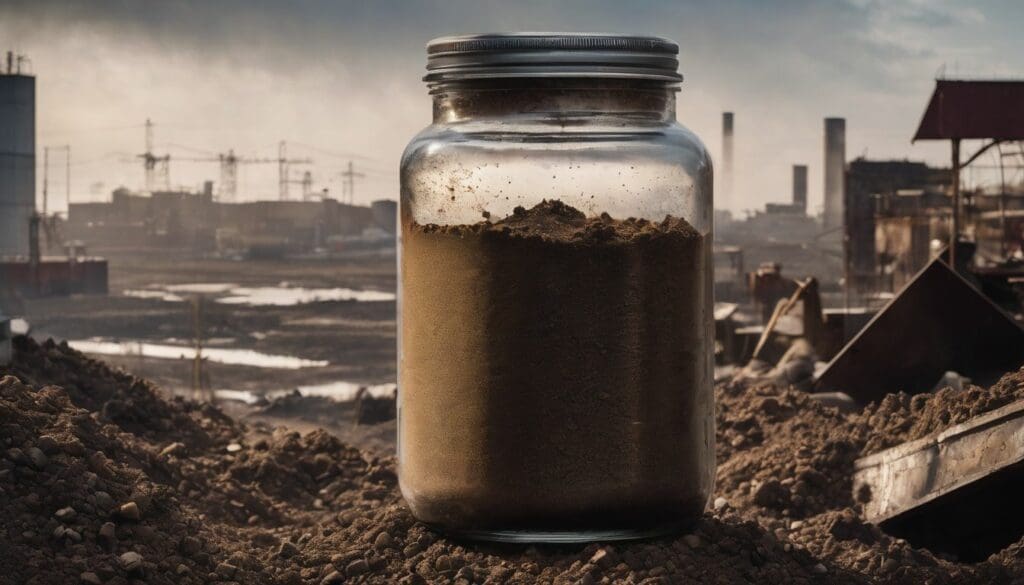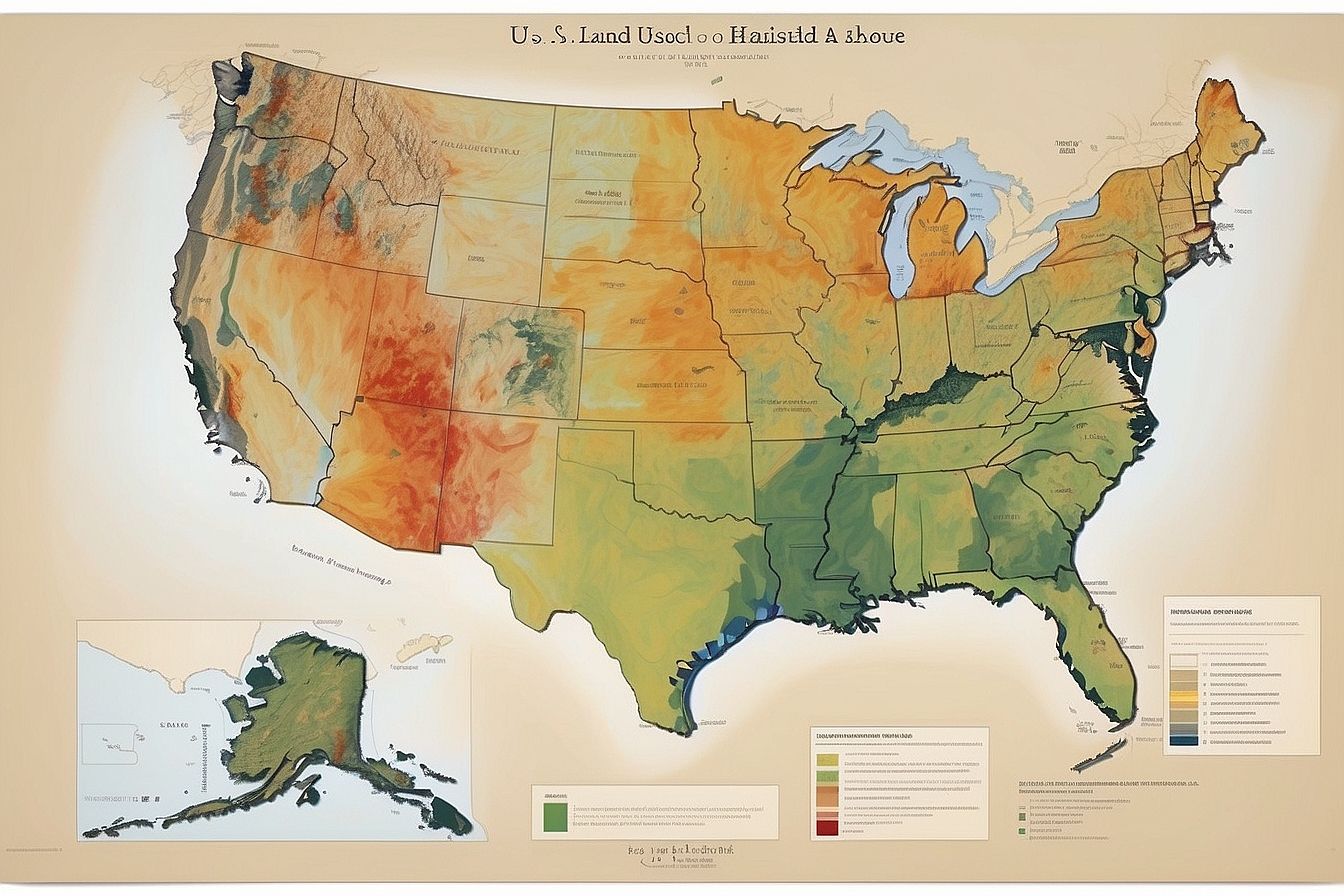We’re all rather familiar with the quintessentially British scene of morning dew glistening on blades of grass, yet often we overlook the hidden narrative beneath our very feet. Like many, we’ve witnessed once verdant fields fall into desolation and have taken it upon ourselves to delve into the plight that afflicts our planet’s precious soil, uncovering a staggering 2 billion hectares tainted by pollution.
Our research has not merely been an academic pursuit but a journey towards hope; offering hands-on guidance to foster rejuvenation within the fragile mantle of our earth. Let us invite you on this enlightening exploration to discover how together, we can nurture and restore balance to our land.
Key Takeaways
- Soil pollution affects 2 billion hectares worldwide, reducing soil fertility and leading to serious environmental and health issues.
- Sustainable farming practices such as crop rotation, cover cropping, and organic farming can help restore soil health and prevent further degradation.
- Chemicals from synthetic fertilisers, pesticides, and herbicides contribute to the contamination of our food, water, and air; opting for natural alternatives is a vital step towards cleaner ecosystems.
- Preventing soil erosion through conservation efforts like reforestation, contour ploughing, and protecting vegetation cover is essential for maintaining fertile land.
- Proper waste disposal methods are crucial in combating soil pollution to ensure hazardous materials do not contaminate the ground.
The Dangers of Soil Pollution
Soil pollution poses a serious threat to the environment, as it can lead to reduced soil fertility, soil erosion and contamination of food, water, and air. These dangers not only impact agricultural practices but also have significant implications for human health and food security.
Reduced soil fertility
We see the impact of soil pollution on land’s productivity every day. The once-rich earth loses its strength, struggling to support plant life. Chemical fertilisers and pesticides seep into the ground after repeated use, disrupting the delicate balance needed for crops to flourish.
This not only hampers food security but also poses serious environmental health risks.
Harvests dwindle as vital nutrients fade away from our soils due to agricultural pollution. We’re faced with a pressing challenge: finding ways to revive the fertility without causing further harm.
It means turning away from synthetic solutions that degrade our precious soil and seeking out natural alternatives that can heal and replenish what has been lost.
Soil erosion
Soil erosion occurs when the top layer of soil is washed or blown away, leaving the land less fertile. It happens due to natural factors like wind and water flow, but human activities such as deforestation and improper agricultural practices can exacerbate it.
Soil erosion can lead to decreased crop yields, loss of biodiversity, and increased sedimentation in water bodies. Implementing sustainable farming techniques and reforestation efforts are essential in preventing further soil erosion.
In combating soil erosion, protecting vegetation cover becomes crucial. Conserving forests and grasslands helps prevent excessive runoff that contributes to erosion. Additionally, practicing contour plowing, terracing on sloping lands, and using mulch or cover crops aid in retaining soil moisture and reducing surface water runoff that causes erosion.
Contamination of food, water, and air
Chemical pollutants from soil pollution can seep into the food we eat, the water we drink, and the air we breathe. Pesticides and synthetic fertilisers used in farming can contaminate produce and water sources, while industrial activities contribute to air pollution through emissions of toxic substances.
These contaminants pose serious health risks to humans and wildlife alike, making it imperative to address soil pollution for the well-being of our environment and future generations.
Contamination of food, water, and air by soil pollution necessitates urgent action for cleaner ecosystems. Reducing the use of harmful chemicals in agriculture, implementing sustainable land management practices, and ensuring proper waste disposal are essential steps towards mitigating this pervasive threat.
Ways to Address Soil Pollution
To address soil pollution, we can reduce the use of synthetic fertilisers, pesticides, and herbicides. Implementing sustainable farming practices and proper waste disposal are other effective ways to combat this invisible threat.
Reduce use of synthetic fertilisers, pesticides, and herbicides
- Opting for organic and natural alternatives to chemical fertilisers and pesticides.
- Implementing integrated pest management strategies to minimise the use of harmful chemicals.
- Supporting sustainable agricultural practices that prioritise soil health and biodiversity.
- Encouraging the use of biological pest control methods such as introducing beneficial insects.
- Promoting crop rotation and cover cropping to naturally manage pests and improve soil fertility.
Implement sustainable farming practices
Implementing sustainable farming practices is crucial in combating soil pollution. It helps to maintain soil quality and fertility while reducing the use of harmful chemicals. Sustainable farming practices include:
- Crop rotation: Rotating crops helps to maintain soil nutrients and reduce the build-up of pests and diseases.
- Cover cropping: Planting cover crops helps to prevent erosion, improve soil structure, and suppress weeds without the need for chemical herbicides.
- Organic farming: Embracing organic farming methods eliminates the use of synthetic fertilisers and pesticides, reducing the risk of soil contamination.
- Conservation tillage: This practice minimises soil disturbance, preserving its organic matter and structure while preventing erosion.
- Agroforestry: Integrating trees into agricultural landscapes can enhance soil fertility, increase biodiversity, and provide natural pest control.
- Integrated pest management (IPM): IPM utilises natural predators and beneficial insects to manage pests, minimising reliance on chemical pesticides.
- Soil conservation practices: Implementing terracing, contour planting, and buffer strips can help prevent soil erosion and nutrient run-off into water sources.
- Precision agriculture: Utilising advanced technologies to optimise input usage and reduce environmental impact while maintaining productivity.
- Composting: Recycling organic waste into compost enriches soil with essential nutrients without the use of chemical fertilisers.
Proper waste disposal
- Dispose of hazardous waste at designated facilities to prevent contamination.
- Avoid dumping industrial waste into landfills to safeguard against chemical pollution.
- Utilise composting for organic waste, reducing the release of harmful substances into the soil.
- Implement recycling initiatives to reduce the amount of waste ending up in landfills and prevent soil degradation.
- Engage in community clean – up efforts to remove litter and prevent environmental contamination.
Conclusion
In conclusion, addressing soil pollution requires collective action. We must reduce the use of synthetic fertilisers and pesticides to safeguard our environment and food sources. Implementing sustainable farming practices is crucial for preserving soil health and fertility.
Proper waste disposal is essential in preventing further contamination of our land, water, and air. Taking these steps will help combat the invisible threat of soil pollution.
FAQs
1. What is soil pollution?
Soil pollution is the contamination of the Earth’s land surfaces by harmful substances like heavy metals, pesticides, and industrial waste, making it an invisible threat to our environment.
2. How do pesticides affect soil quality?
Pesticides and herbicides used in farming seep into the ground, leading to pesticide contamination which can harm plant growth and degrade the overall health of the soil.
3. Can contaminated land affect water sources?
Yes, when land is polluted with chemicals or heavy metals, these pollutants can leak into groundwater or nearby streams causing environmental degradation and water pollution.
4. What causes heavy metal contamination in soils?
Heavy metal contamination often results from industrial activities such as mining or manufacturing where toxic metals are released into the environment, polluting both land and water.





